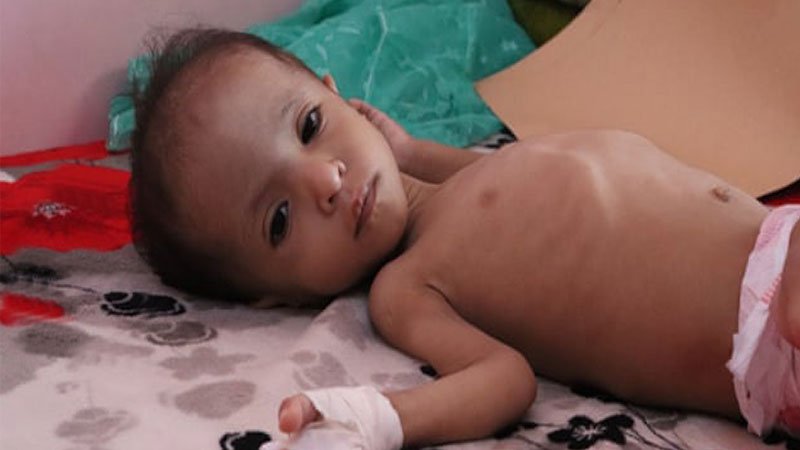Whatever else it may have done or not done, the last year of Modi 1.0 and now Modi 2.0 is bringing energy into the nutrition programme to combat child malnutrition. Government decided to observe the Poshan Maah again this September, as it did last year and this time its thrust is for Poorna Ahaar (complementary feeding) that a child must get to grow healthy, acquire immunity and fuel brain growth.

Only 43% of children are introduced to complementary foods in time. We all know that it is complementary feeding in the first two years of life, coupled with breastmilk, which can arrest malnutrition. After 2 years, the game is up, so to speak, as far as brain development goes. What is this 43% figure telling us? That 57% of the children are not fed properly in the first 2 years of their life, as required. Children from even well to do families are not getting adequate nutrition in those formative years.
The second set of figures is even more devastating: only 36% of children between 6- 24 months are fed at least 3 times a day. Daily frequent meals are a prerequisite for healthy growth. Worse, only just over 9% children get adequate food with nutrients to support the growth of their bodies and brain in those early critical months where the damage can be irreversible.
Small wonder then that, despite some improvements, our stunting, wasting, undernutrition, anaemia figures for children are as high as they are. 2 out of 5 children are stunted, 1 out of 5 wasted, and 3 out of 5 are anaemic. Even as government is pushing for Poorna Ahaar there is a category of children we must never lose sight of. This is a group of children, often talked about, but whose numbers remain unaltered: the SAM (severe acute malnutrition) kids. These children are so vulnerable that a mere bout of diarrhoea or pneumonia can be fatal.
It is wasting of children (low weight for height) and their severe and chronic wasting (SAM, which can also lead to swelling of the abdomen and spindly legs) which makes them susceptible to infection, disease and death. The recent epidemic of AES (Acute Encephalitis Syndrome) in Bihar this summer which claimed more than 150 lives of children, where the medical community attributed the deaths to malnutrition, is only one case in point. The deaths in a Gorakhpur hospital a couple of years ago are another example.
There are spots in India which have become synonymous with child deaths (many brought on by severe malnutrition) years after years: Malkangiri in Odisha, Nandurbar, Palghar, Melghat in Maharashtra. The list is only illustrative. I can never forget the father who wept over the severely wasted body of his dead child, “I could count the number of his ribs.” This was in Nagada village in the mineral-rich district of Jajpur in Odisha.
Evidence shows that 80-85% of the SAM children can be pulled back from the brink if given timely help. If signs of wasting are spotted early on at the community level, before it leads to medical complications, lives can be saved. In recent years, efforts have been put in place in several states for Community Management of Severe and Chronic Malnutrition (CMAM) and they have yielded good results, be it in Bihar or Maharashtra. It now needs universally accepted guidelines.
It also is understood that SAM increases dramatically with chronic poverty, lack of education among mothers, inadequate and low-nutrient diet, and lack of clean water and sanitation. Sadly, SAM children have become like a football between warring groups within the nutrition community. Just because the community cannot agree on the food items which will help treat them or who should manufacture it – and it is nothing complicated but a paste of peanuts, oil, sugar and condensed milk – should these children have to wait for another 10 years till “we have decided”?
Unlike in the past, Indian companies like Amul are now manufacturing these foods. It should be easy enough to make them locally under Skill India, Make in India initiatives, ensuring a protocol of global standards.
India has enough resources, human and material. Any society, which considers itself humane, has to keep in mind reaching its last person. Who could be more of a “last person” than that severe and chronically malnourished child, voiceless, most vulnerable, swinging between life and death, ready to disappear into those “Gumnamiyon ke andhere”, unless pulled back from the precipice.
Source: TOI | Neerja Chowdhury



